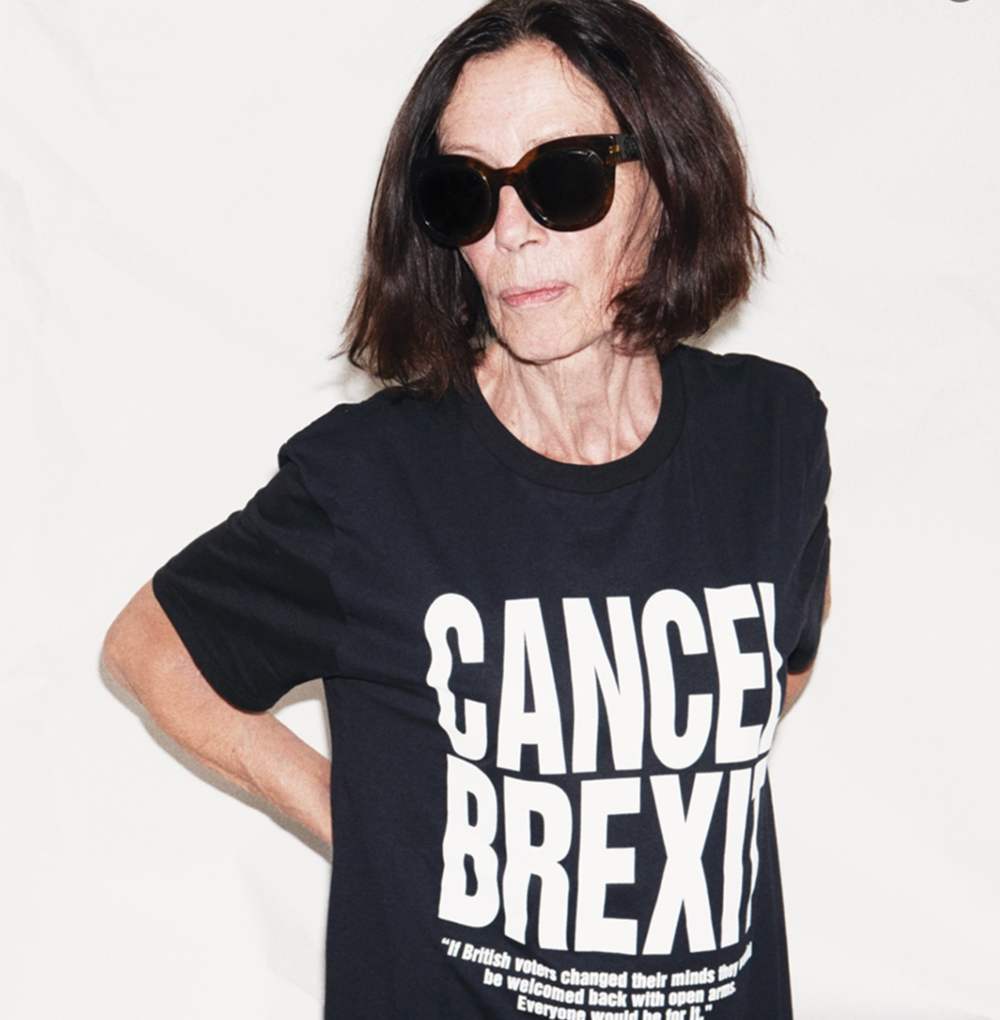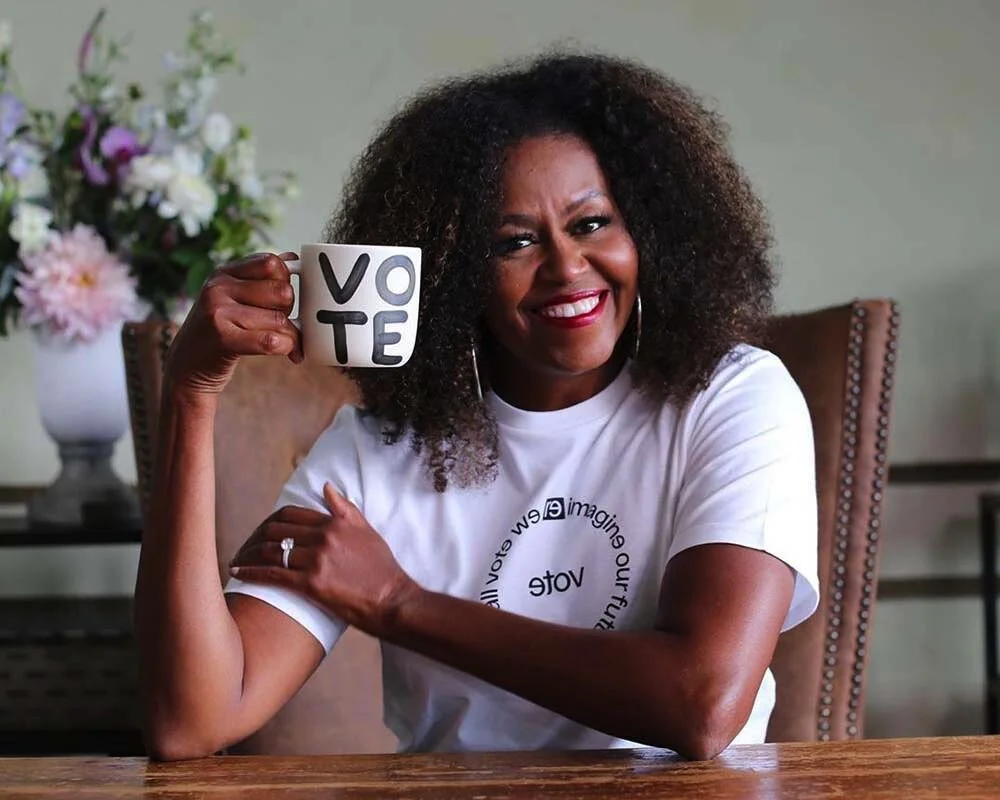Fashion Statement
Katherine Hamnett
The BBC’s You Are What You Wear (featuring Irish stylist Darren Kennedy) is the first makeover show to be aired on the UK’s flagship station in 15 years. Before talent contests like Strictly Come Dancing kept bums on seats every Saturday night, makeover shows were our reality TV of choice; the noughties was awash with them. From What Not To Wear to 10 Years Younger, women (mostly) were taught that the clothes they chose spoke volumes, and they were shown, one tailored separate at a time, how to take control of that message. The eventual fall off in makeover shows reflected a cultural shift. Consumers began looking not to television stylists but to celebrities and women in the public eye for sartorial inspiration. There’s been a further shift since. Post Celtic Tiger, post recession, post pandemic outbreak, women are not interested in those who promote clothes for clothes’ sake (have you heard anyone admire Melania Trump’s wardrobe?). They’re intrigued by women who use clothes to vocalise a message or reflect an ideal.
In the Netflix documentary of her memoir, Becoming, Michelle Obama spoke about “turning fashion into a tool”. Unlike previous First Ladies who tended to stick to a small number of designers they trusted to create a signature look, throughout her husband's presidency, Michelle Obama chose clothes from an unprecedented number of designers in order to reflect America’s “glorious diversity”. Her clothes were a sartorial overture to her husband’s political vision. For all of the industry’s faults, fashion really can be a meaningful tool of expression. When I watched Michelle Obama speak as part of the Democratic National Convention, I didn’t at first notice the delicate VOTE necklace she wore hanging round her neck. It wasn’t immediately obvious, but it was so impactful when my eye did, at last, focus on the unassuming gold accessory.
I think we’re all far more invested in the upcoming US election than we’ve ever been in any foreign power struggle. Four years ago we cared greatly, certainly. We wanted the first woman president to be elected. We wanted the self-obsessed billionaire Donald Trump to be put in his proper place. Instead, he was handed the White House and Hillary was left empty-handed. Can the fashion industry help turn the tables this time? It’s certainly going to try.
Obama’s VOTE necklace was created by Black jewellery designer Chari Cuthbert, who began making it in advance of the 2016 presidential election for herself and her friends. Designers like Cuthbert who use their talents to create clothes and accessories that issue an important message can add energy and vigour to a campaign in which regularly repeated catchphrases descend quickly into nothing more than meaningless syllables. This is why 19 of America’s most influential designers have come together to support Joe Biden and Kamala Harris’s presidential campaign with a collection of inexpensive merchandise sporting a variety of slogans, from Thakoon’s “Unity Over Division” sweatshirt and Brett Heyman’s “Believe in Better” tote bag to Monique Péan’s “Unity” face mask. And this past week, Michelle Obama has also just launched a line of merchandise called, When We All Vote.
Natalie B Coleman
Fashion can be blatant in its messaging; Vera Wang’s design was a blue hoodie that simply had “Vote Joe” stamped on the front in bold block capitals, while Irish designer Natalie B Coleman makes no bones about the communiqué of her clothes, which feature slogans like “Guaranteed To Bleed”. But fashion can be wonderfully subtle too, and Michelle Obama is by no means the first public figure to harness its capacity for inferring, without shouting out, more than just a sartorial statement. As a young mother, the late Princess Diana, for instance, was artful in how she used her wardrobe to tell her own story. In the 1980s, she once wore a sweater with the slogan “I’m A Luxury” written across it while forlornly pushing William and Harry on a swing in the garden of Kensington Palace. As a young Royal, Diana had no voice, so she used her clothes to articulate how she was feeling, while also sending a pointed message to her husband, who had continued his relationship with Camilla Parker Bowles by this time.
Never has there been as much enjoyment (on social media) over a public figure’s sartorial choices than when Queen Elizabeth accessorised her outfit for Donald Trump’s state visit in 2018 with an exquisite brooch given to her by the Obamas as a mark of friendship. The Queen’s choice of brooch – she’s enjoyed wearing pins for most of her reign – is never random on a state occasion, and she often chooses a piece gifted to her by the nation whose state function she’s attending, as a show of friendship. Was this particular brooch intended to vocalise her opinion of the Trump presidency and its policies? While her pins are often employed as overtures, sometimes they’re used as weapons too.
You don’t have to belong to a political cause or be lobbying one to use fashion as a form of protest. When my mother was 18 in the late 1950s, she wore her first pair of trousers while on a date with my Dad. Hilariously, she was snubbed by the lady who lived next door on her return home as this was thought to be quite shocking, and a bit common. But my mother was sending a message of independence and maturity. She was making her own small protest against gender stereotypes and female pigeonholing. My own style is almost always covered up; puritanical even. I like shirts that are firmly buttoned to the neck, dresses that fall mid-calf over knee-high boots, and I love to layer polo necks and sweaters over and under dresses and jumpsuits. On some level, this is a reaction to the tired assumption that a woman’s body is there for public view; a subconscious protest against the voyeurism women have always been subjected to.
Phoebe Philo
Designer Phoebe Philo – who transformed French fashion house Céline into a phenomenon, especially loved by women in midlife for its fluid, elegantly draped pieces that looked chic and directional not dowdy – revealed to the New York Times several years ago that, “Images of women… being beautified, sexualised and shown like dolls… has had an impact on me, as I believe it has on all of us.” She single-handedly sparked the white trainers trend, and defined her own look with androgynous separates. She created the most successful brand in the world by taking a stand against perceived notions of womanhood and femininity.
This sexist narrative has influenced how many public figures dress, especially those in political life. Michelle Obama was one of the first to unapologetically embrace her femininity; something Hillary Clinton and Laura Bush struggled to do in their pastel pantsuits. Like Michelle Obama, new EU Commissioner Mairead McGuiness sends a clear message of confidence coupled with femininity by wearing colour beautifully, pattern subtly and artfully, and packaging both up expertly in a tailored, no-fuss fashion. Her outfits infer professionalism and personality. She has refused to allow the male-dominated arena of politics to dictate her appearance.
As both Michelle Obama and Mairead McGuiness demonstrate, you don’t need a slogan sweatshirt to send a message through what you wear. At times, it helps though – Ireland’s Repeal sweatshirts in 2018, for instance; Benedict Cumberbatch’s sporting of a “This Is What A Feminist Looks Like” T-shirt; and Katharine Hamnett’s “Cancel Brexit” top. If slogan tops are the voice of protest, the former first lady’s outfits were more of a diplomatic expression. Fashion offers each one of us a mouthpiece. All we need do is decide what it is we want to say.
Marie Kelly, September 2020.
What do you think? Tell us in the comments box below…
join the conversation
share and comment below, we’d love to hear your thoughts…













